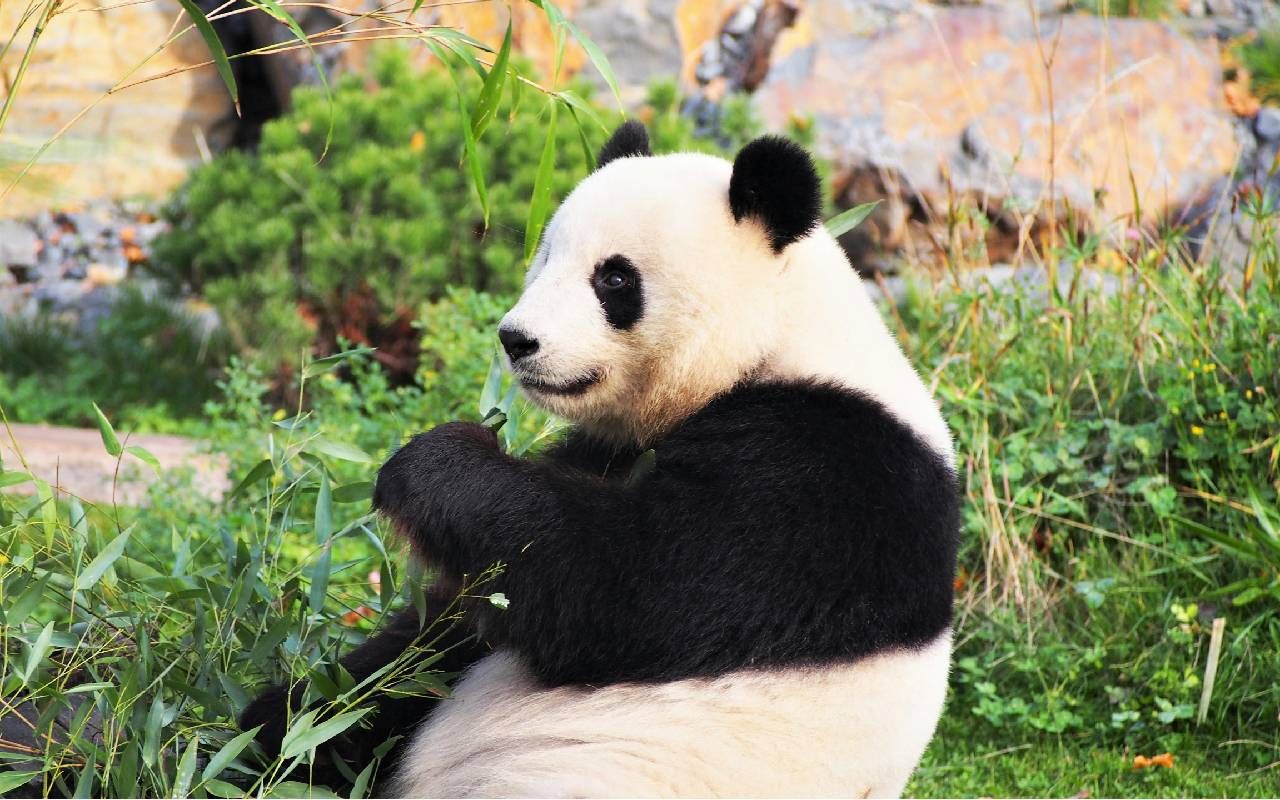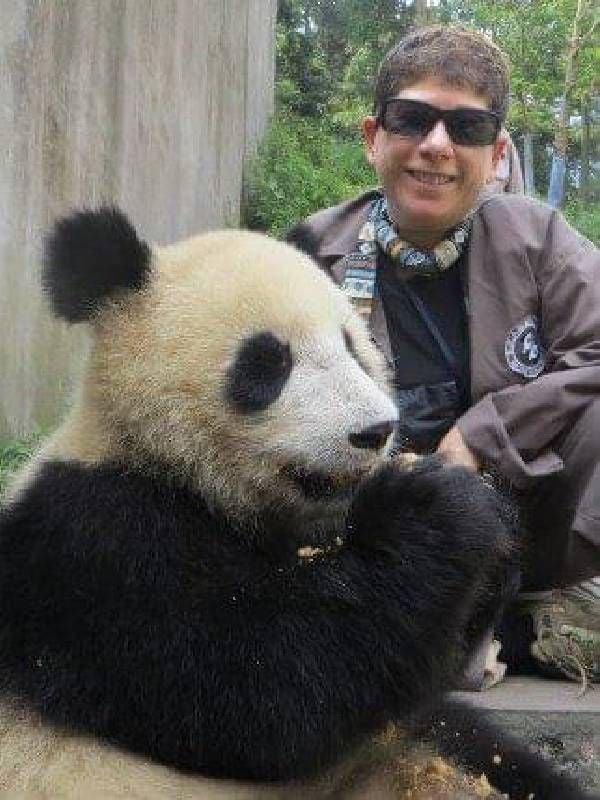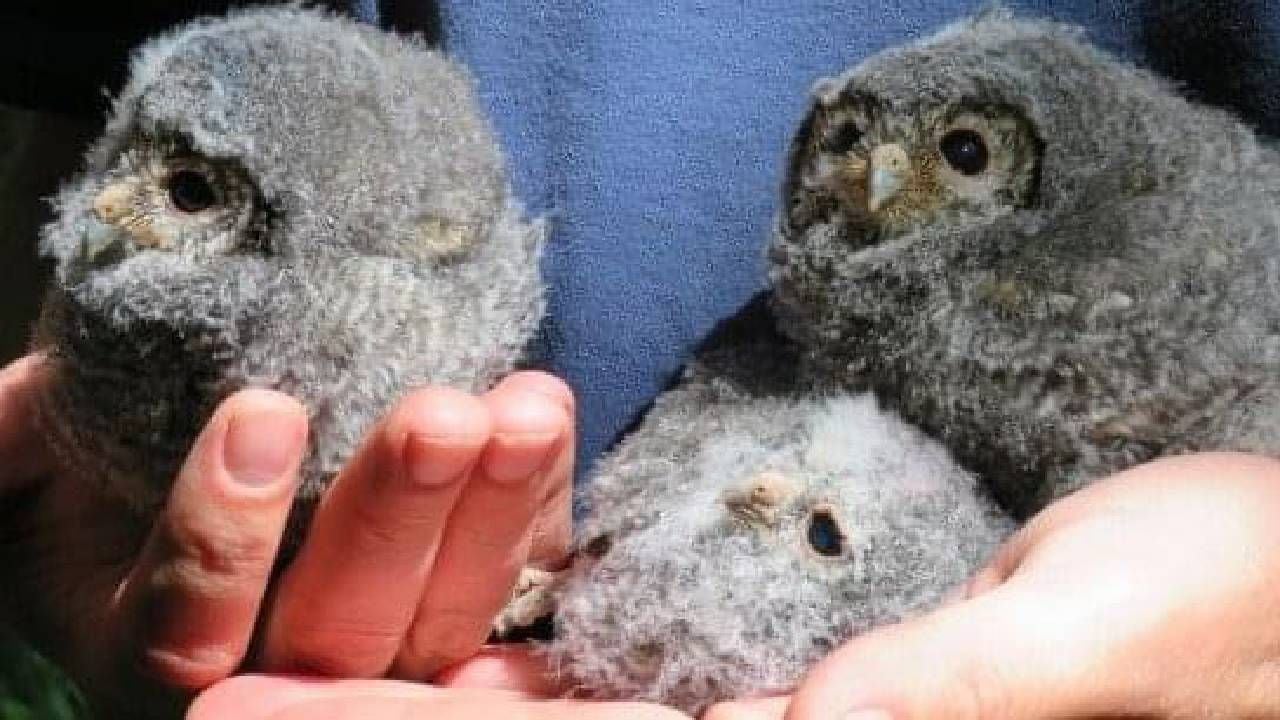Love Animals? Consider a Vacation with Them
Paying to participate in a 'conservacation' project is a do-good alternative to a week at the lake or the beach
Kathryn Scott has measured the work of bees, butterflies and hummingbirds at sustainable coffee plantations in Costa Rica, documented the nesting and feeding habits of penguins in Patagonia and surveyed the health of coral reefs in the Caribbean.

Scott is not a formally trained scientist. The 75-year-old resident of Olympia, Washington, is a volunteer whose work on scientific expeditions was arranged through a nonprofit organization called Earthwatch Institute.
If you are eager to help in wildlife conservation, opportunities abound to work hands-on with small and cute animals, like baby owls, huge and cute ones like pandas and huge and not-so-cute beasts like rhinos. You can volunteer to work on research trips in the U.S. and exotic locations from Africa to Asia.
Penguin Hatches in Your Hand
Scott has been on nine excursions arranged by Earthwatch, including a census of birds and bats in Cuba, a study of orca pod feeding habits in Canada and the compilation of data on birds and reptiles in Australia. One memory stands out. "My single favorite moment was the sight of a tiny penguin beak protruding out of the hole it had made in the egg it was hatching from," she recalls.
"Some say it's a lot of money to pay to work — but it goes to a good cause, for research and equipment."
Prefer to observe? There also are opportunities to watch conservation groups at work.
"It's a way to go somewhere I've never been to do something I've never done," says Scott. "Sometimes the unfamiliarity of a new place and a new task is a little scary. But it's a good kind of scary — the kind where you're operating with a little more alertness and a little more aliveness than in your familiar routines."
An extra thrill: maybe you'll help discover a new species, or help form a new nature reserve. Earthwatch, which pioneered its citizen science model in 1971, has discovered a new dinosaur and identified a new spider species in the Cape Cod National Seashore, where it also preserved and relocated a Life-Saving Station built in 1897.
Working in an Owl Nursery
In northern Utah, Marcia Henderson, 66, of Las Vegas climbed ladders to pluck baby owls from their nests in trees, to weigh and measure them after carrying them down, one baby per sack. "It was really fun," she says. "They were very cute, maybe four inches, and already had feathers. Their parents were pretty good about it."
In China, Henderson worked in a panda kindergarten and nursery, monitored pregnant pandas and hand-carried two electronic track collars to China from Denver-based Pandas International, where her brother works, to track pandas before releasing them into the wild. Her 13 volunteer trips with Earthwatch include the same Patagonia trip Scott did.
"Penguins are clowns, so entertaining," she recalls. "Their parents did protest us removing their chicks." One startling sight: seeing an armadillo infiltrate a flock, trying to steal penguin eggs.
In Peru's portion of the Amazon rainforest, she helped on a macaw study, weighed piranhas (wearing, of course, gloves), set up "camera traps" to observe the behavior of pink dolphins, baby caimans and other wildlife, and entered data in the computer.

In South Africa, she worked with Rhino 911 as the rhinoceros rescue service tracked and found an injured baby rhino, which was darted, then X-rayed and given medications.
In Malawi, where elephants, lions, rhinos, giraffes and cheetahs were re-introduced after being hunted to near extinction decades ago, she set up camera traps in the Majete Wildlife Reserve to observe their behavior and picked up park trash with village kids. She says, "it's a real success story for African Parks," a nonprofit that manages 22 national parks and reserves in 12 countries.
All Animals, All the Time
It's not as if Henderson lacks animal contact at home in Las Vegas. She has two dogs, an Airedale and a terrier mix, and four birds, a cockatoo, parrot, crowned conure and parakeet. She used to keep horses, donkeys, peacocks, a goat and a pig, who have since died. "It was rural when we moved here 37 years ago, and zoned for horses," she explains. Even in her Air Force job, she trained and worked with drug- and explosive-sniffing dogs.
Why not just help out at the local ASPCA? "These trips are a great opportunity to get behind the scenes and help out animals, who are close to my heart," Henderson says. "Some say it's a lot of money to pay to work — but it goes to a good cause, for research and equipment. Earthwatch takes very good care of their volunteers and are safety conscious."
She picks trips based on the destination and the project itself. Activity levels range from mild to very strenuous. Her most demanding was Andorra, the tiny principality in the Pyrenees mountains, where they caught birds in nets to check their bands. ("My REI trekking poles came in handy.")
Lodgings and prices also vary greatly, depending on the project and location. In Utah, three biologists and 12 volunteers, mostly aged 50 and over, shared a big rental house. "The biologists cooked and did grocery shopping, and took us out for dinner," she says.

In the Amazon, volunteers bunked on a riverboat — "not a fancy-schmancy one." In Malawi, it was a tent. In South Africa, a shared hut. In Patagonia, the semi-arid plateau shared by Argentina and Chile, Scott stayed in a large house on the beach.
Earthwatch expedition costs range from $1,500 (Australia's Great Barrier Reef) to $4,150 (South Africa), airfare excluded. Per-day costs range from $259 (16 days in South Africa) to $414 (seven days in Costa Rica) to $550 (seven days in Patagonia).
The Earthwatch web site can sort excursions by continent, trip type (ocean or wildlife/ecosystems) and month, shows lodging types, food and activity level, and background about the scientist and research results from previous trips.
If you prefer a resting vacation, Audley Travel, a tour operator for custom trips worldwide (largely but not entirely luxury), can arrange visits to see wildlife conservation in action. At the Ol Pejeta Conservancy, a 90,000-acre not-for-profit wildlife conservancy in Kenya, for example, you can help guard dogs practice tracking a new scent.
"These trips are a great opportunity to get behind the scenes and help out animals, who are close to my heart,"
If you are drawn more to chimpanzees, you can help to reacquaint them with humans at Rubondo Island Camp on Lake Victoria in Tanzania. Here, a chimp rehabilitation project has been so successful that researchers now need help in re-habituating them to humans so the scientists can perform vital research.
Another global custom-only tour operator, Black Tomato, offers field trips, educational experiences created for families (but many adults go minus kids). Its least expensive tour involves conserving habitat on southern Thailand's coast to assist the dugong, a marine mammal related to manatees. The work includes planting seagrass beds and perhaps dismantling tangled fishing nets and other hazards; the cost is $10,920 for 12 days.
Costlier trips range from New Zealand's Southern Alps, where you join a conservationist to protect kiwis and other native birds from predators, to the French Riviera, where you watch conservation in the Pelagos Sanctuary, a major marine reserve for the fin whale (30,000 congregate there in summer).
Henderson sums up the appeal of animal volunteer travel. "It truly takes my travel experience to a different level."
Read More

